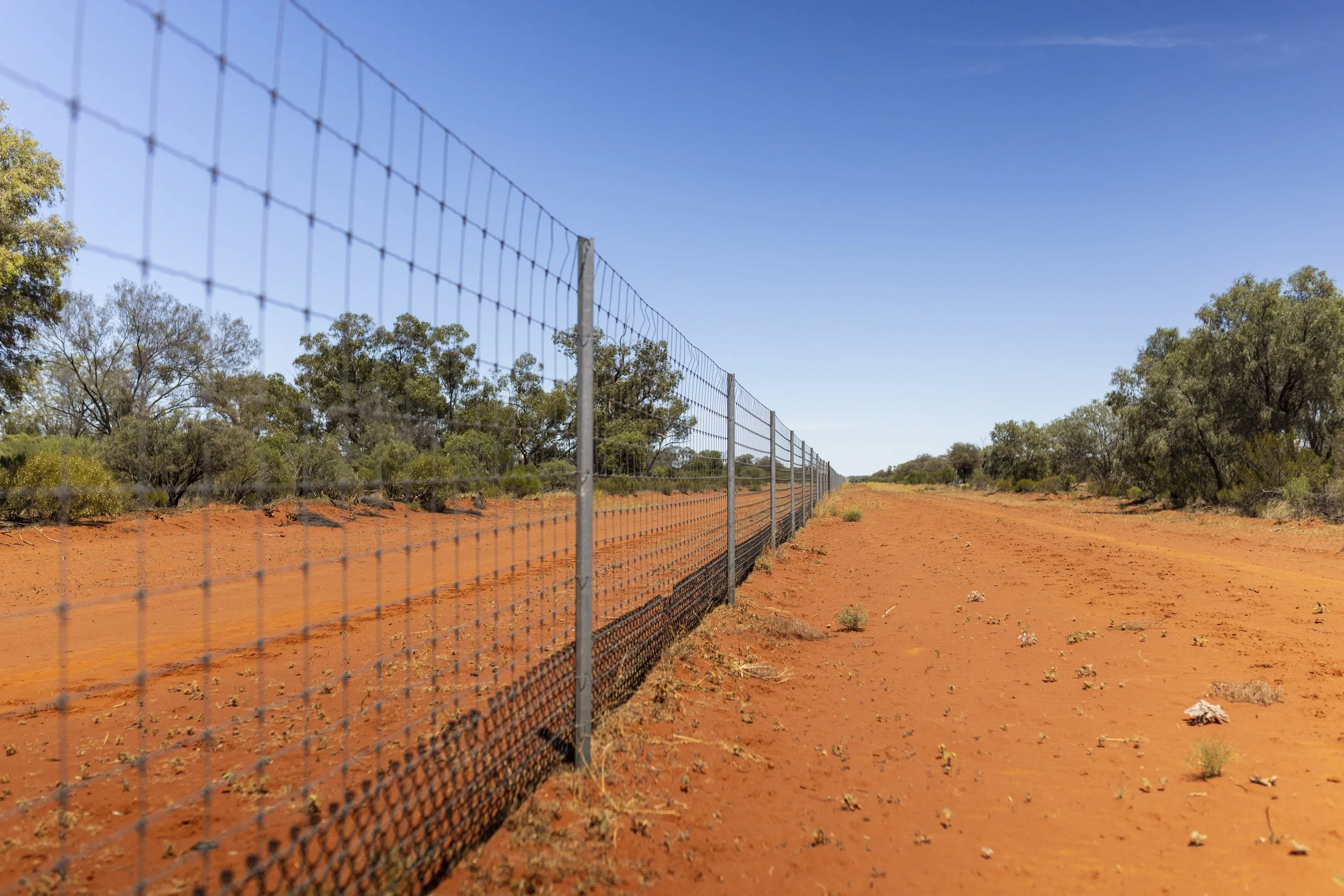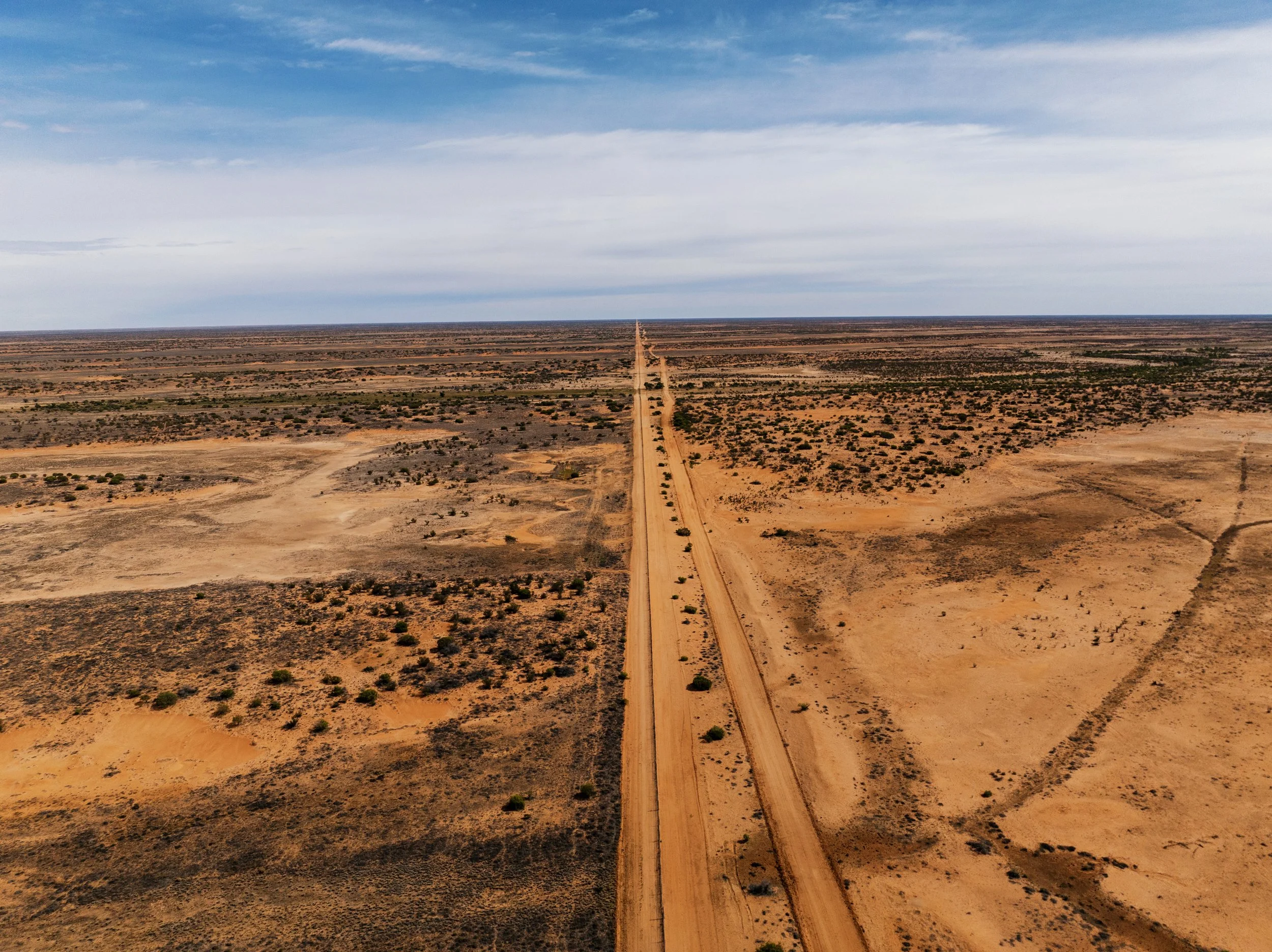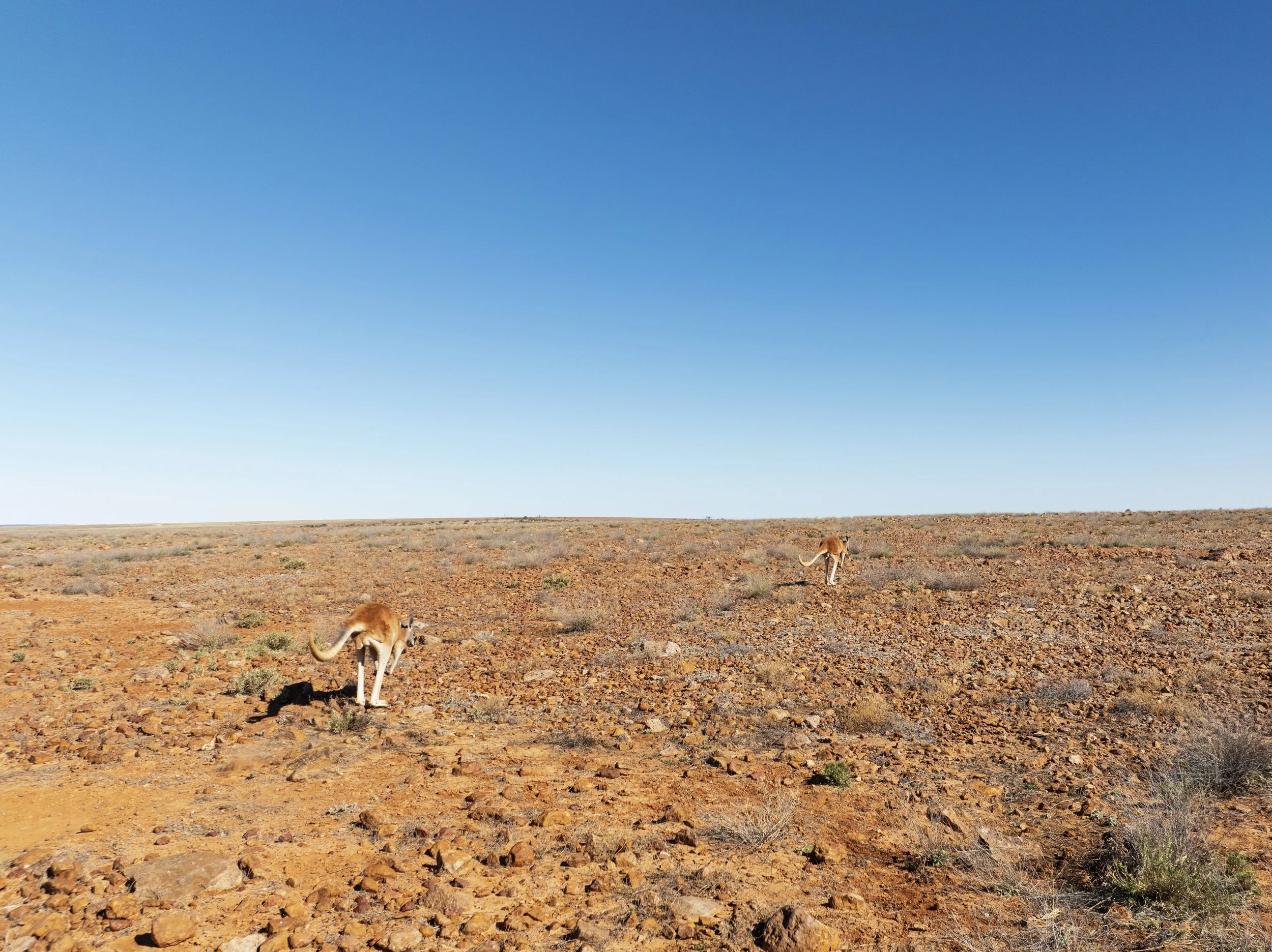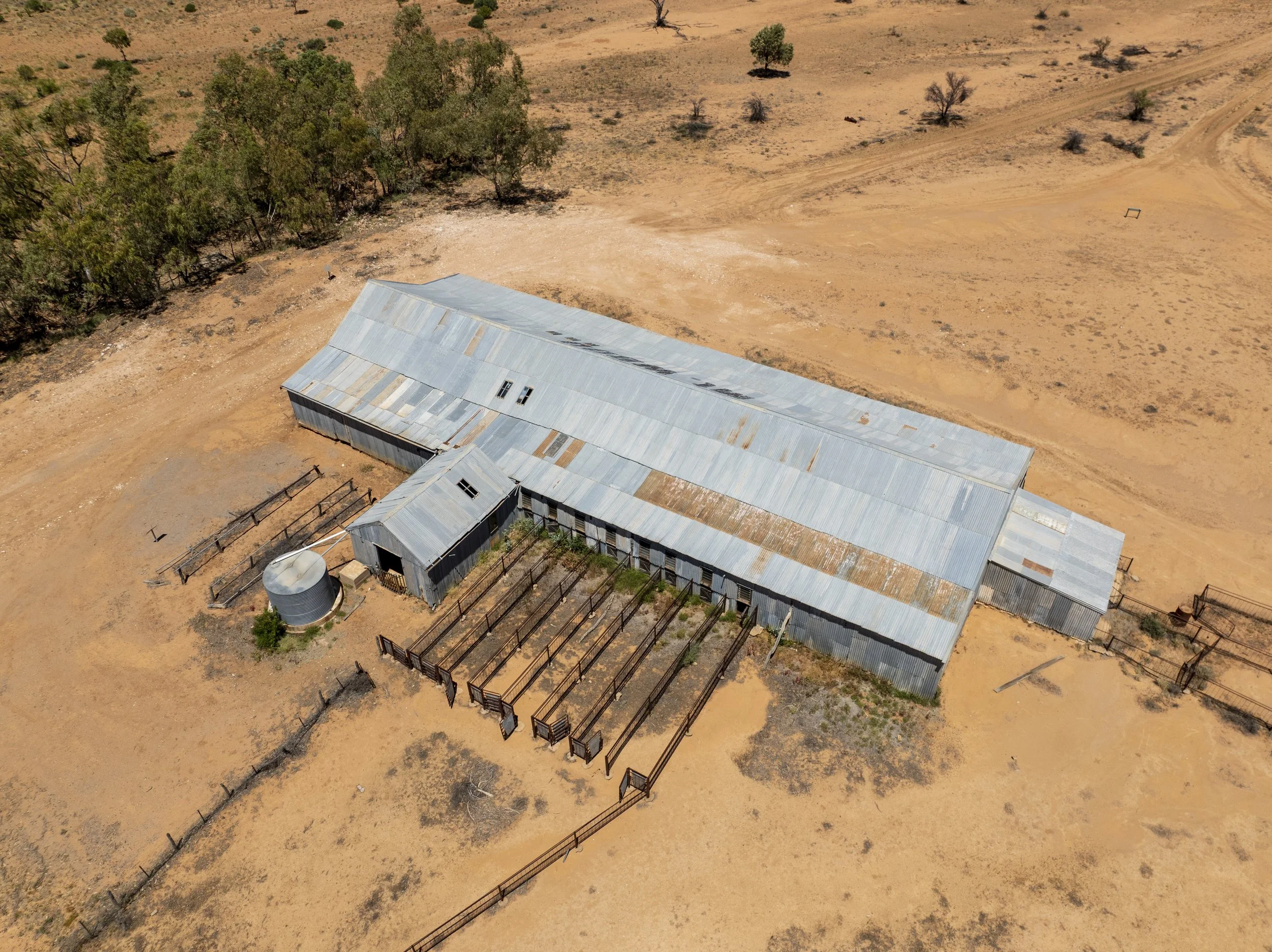Life on the Dingo Fence: Stories From the Outback
I have recently wrapped up a 3-week filming trip following the world's longest man-made structure, the dingo fence. I followed the fence through Queensland along its border with NSW and then into South Australia. I went into this trip knowing it would be one of my last shoots for the entire documentary and had somewhat bittersweet feelings about that. I wanted to share a few behind-the-scenes photos and stories from this final trip and share some updates about the film along the way.
This was my third attempt at filming this section of the fence. The first two attempts failed miserably because of huge weather systems that brought months' worth of rain in a matter of days to the specific areas I wanted to film. I was driving through some of the strongest downpours I had ever seen on the first two trips, so when I hit a storm front on the second day of driving to the fence, I was a little anxious. The rain was so strong that night that water began to seep into my rooftop tent and soak my sleeping bag and mattress, which was a rough start to the trip.
It took me about 4 days' worth of driving until I first saw the fence at a tiny town on the NSW and Queensland border. I had been reading about this section of the fence for 3 years now, and to finally see it in person was both exciting and a huge reality check. Seeing this huge structure spread beyond as far as the eye can see in both directions was hard to believe. Once I sent the drone up and saw that this distance only seemed to get further only reinforced these feelings.
The Dingo Fence in Queensland
Before I forget, it is worth mentioning that it is illegal to drive along the dingo fence (except in a very few select areas), and I cannot stress this enough; if you do decide to visit the dingo fence yourself, do not ignore these signs. The barrier fence team drive these roads nearly daily and is not expecting to have any other cars on the road, so when you are driving along a huge sand dune, neither of you will see the other coming, and the results could be incredibly dangerous. Do not risk it. Do not drive along the dingo fence!
Along the drive, I found several dingo trees. By this point, I am almost numb to how brutal these displays are but one of these dingo trees in particular really got under my skin. Not only were there several hanging in the tree that had their heads removed, but the ground was completely covered in bones, decaying fur and body parts from dingoes that had been hung there years before. It was deeply unsettling but a valuable addition to the film.
I have fixated on maps for well over a year to figure out the safest and most accessible route to visit the dingo fence possible in all three states, and I am glad to say this research paid off immensely. While I will admit that filming an inanimate fence isn’t the most exciting thing to film, it was a challenge I welcomed to show the scale and effect that the dingo fence has, both positive and negative. I made my way to Sturt National Park in the northwestern corner of NSW, which was a location I have wanted to visit for as long as I can remember, and it was worth the drive alone.
The Dingo Fence cutting through NSW
Sturt National Park is difficult to describe, just how vast and rugged this country is. It seems like every plant had spikes of varying strength that wanted nothing more than to get stuck in your socks, clothes, hair and beard. The animals that call Sturt home are also some of the most resilient and unique animals this country has. Seeing huge red kangaroos bounding across the dry, cracked red dirt in the teaming heat was truly spectacular.
Two red kangaroos in Sturt National Park
I also wanted to visit Sturt National Park to film Mt Wood wool shed, which blew me away. The Mt Wood Woolshed is one of those places that feels like it’s been waiting out there in the desert for you to stumble across it. It’s basically a time capsule from the old pastoral days — the kind of building that reminds you how tough, stubborn, and resourceful people had to be to run sheep out here.
It was built in the late 1800s. The timber, the stonework, the way it’s put together made everything feel handmade, practical, and a bit rough around the edges in the best way. You can walk inside and still see the raised shearing board, the old pens, and the dusty light that filters in through gaps in the walls. It’s weirdly beautiful, like the outback’s version of a cathedral. What makes Mt Wood Woolshed cool isn’t just the building, though. It’s the setting. You stand there and it’s just silence, big sky, red earth, and this sense that thousands of sheep and a whole lot of sweat once moved through that space.
Mt Wood sheering shed
From Sturt, I headed to my next location — one I won’t be sharing just yet. Certain parties have shown a remarkable enthusiasm for helping themselves to my work.
I was invited into their home with open arms and was greeted by some of the kindest people I had ever met. I truly felt like I was welcomed into their world and their lives, and they were generous enough to share their stories with brutal honesty and a great laugh. Within 20 minutes of arriving, I was invited to go out mustering, which I, of course, couldn’t say no to! This station runs a few thousand sheep in what most people would consider some of the most brutal and unforgiving country in all of Australia. To say this country was dry would be an understatement. The dirt made a bowl of dry Weet-Bix look like wet n wild. We spent the next 5 hours mustering sheep along a few different paddocks with a gyrocopter helping us from above. I couldn't believe how healthy these sheep looked, given the brutality of the country in which they live. This truly is a testament to the level of care that they receive every day.
Driving along the fence line (which can be done on private property in these circumstances), I spoke to the owner of the station about this experience, living along the fence and how it is vital for him in order to protect his livestock. Without the fence, he told me it would be impossible for his family to make a living here with sheep, and I believe he is right. I went into this trip having only read and seen the perspective of people who want the fence torn down immediately due to the effects it has on wildlife, which, to be clear, I absolutely acknowledge that the fence does have disastrous impacts on wildlife. But I would be a terrible filmmaker if I were only showing one side of the fence and ignoring the other. While I have and will continue to advocate for non-lethal dingo management solutions, there is no silver bullet that will stop their effects on livestock overnight. Unfortunately, it is not that simple.
This particular station covers more than 300,000 hectares which, to put it into perspective, is larger than the entire city of Darwin. The sheep aren’t gathered neatly in one spot; they’re spread across multiple paddocks, and then spread out again within those paddocks. Because of that scale, the idea of running livestock guardian animals out here just doesn’t stack up in the real world. It’s not that I don’t want to try alternatives — it’s that the landscape simply won’t allow it.
To make guardian animals effective across that kind of country, you’d need hundreds, probably even thousands, of donkeys to cover the ground. Guardian dogs aren’t a realistic option either. The heat alone would be enough to knock most of them around, with temperatures reaching the mid-50s here every year. The sheep don’t stay grouped; they wander, they scatter, they move through country that’s rough, remote, and punishing. A handful of dogs can’t shadow thousands of animals spread over hundreds of thousands of hectares.
And then there’s the big one: 1080 baiting is standard practice in these areas, and has been for decades. It’s not going away anytime soon — it’s built into the management system across vast sections of the outback. Running guardian dogs in country where baiting programs operate would be a death sentence for them. No amount of training or careful planning can get around that. So yes, it might ruffle feathers in some circles, especially among people who love the idea of guardian animals on paper. But out here, on land this huge and this harsh, it’s just not practical. It’s the reality of running livestock in the most unforgiving parts of Australia.
Spending time with landholders out here is heavy in a way I wasn’t fully prepared for because you start to feel the weight they carry. There’s a kind of generational scar tissue that builds when your livelihood depends on animals that can disappear overnight. Decade after decade of stock losses, uncertainty, drought, and financial pressure, it leaves a mark.
And when you sit with them long enough, the conversations shift. The bravado drops, the politics fall away, and what’s left is often just honesty, raw, sometimes uncomfortable, but deeply human. Behind every tough stance on dingoes or “wild dogs,” there’s usually a story of watching helplessly as stock were taken, or a memory of parents and grandparents who lived through even harsher times. These aren’t abstract numbers in a policy document; they’re animals they’ve raised, counted on, and depended on to keep a roof over their kids’ heads.
And every now and then, there’s a moment that catches you off guard: the station owner and their son admitting they actually admire dingoes, or that they wish things could be different. Those moments are the ones that stay with you. They’re reminders that this isn’t a story of good guys and bad guys — it’s a story of people doing the best they can in a brutally unforgiving landscape, carrying histories that are heavier than most of us will ever know.
My job isn’t to pick sides. It’s to listen to both of them equally.
This trip along the fence, across Sturt, and out to the sheep station was only a slice of what On the Fence is becoming — but it reminded me exactly why I’m making this film in the first place. Nothing about this story is simple. Not the science, not the history, not the politics, and definitely not the people. But somewhere in the middle of all that complexity is a truth worth chasing: a better understanding of the dingo, the fence, and the people whose lives intersect with both.
If you’ve made it this far into the blog, thank you. It means you care about this project, or at least the messy, beautiful, frustrating world it’s trying to capture. And if you want to help push it forward, there are a few ways to do that:
Join the mailing list – that’s where I share behind-the-scenes updates, screening news, and the bigger moments as they unfold.
Support the film however you can – even small things make a difference. Watching, commenting, following along, donating, buying prints when they are released, all add up to a huge impact.
I’m making this film independently, out of a 19-year-old beat-up 4WD. Every bit of support helps more than I can ever put into words. I am incredibly grateful for your ongoing support over the years and look forward to sharing more updates with you over the next few weeks.














